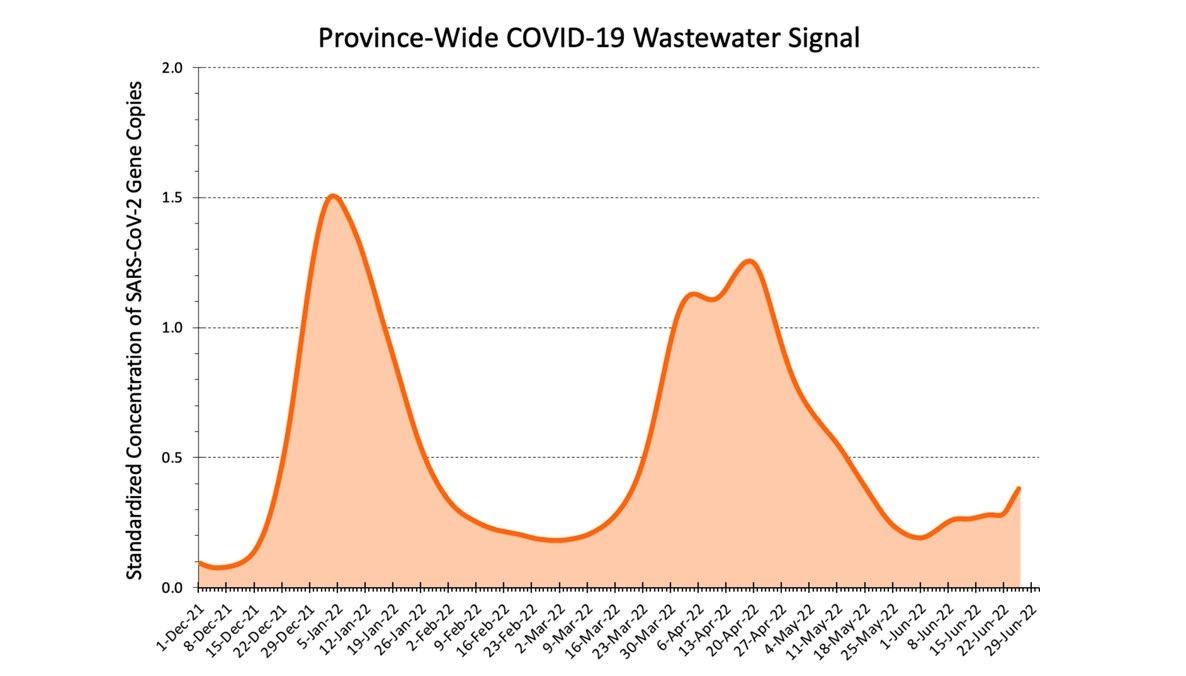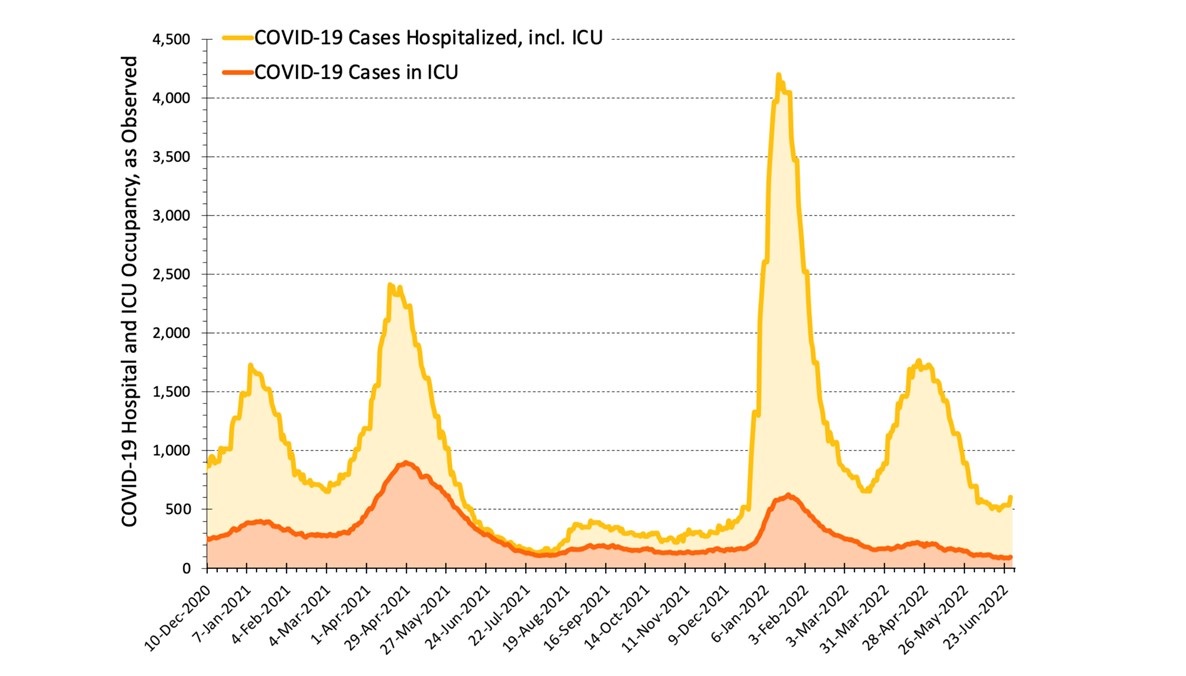Ontario ‘likely entered’ COVID wave driven by Omicron BA.5: science table

Posted July 6, 2022 4:01 pm.
Last Updated July 6, 2022 6:04 pm.
Ontario’s Science Advisory Table says the province has “likely entered a wave” of COVID-19, driven by the Omicron BA.5 subvariant, based on several key indicators including an “exponential growth in cases” and a rise in the wastewater signal.
According to the latest data, the wasterwater signal steadily increased in June in most regions and then spiked last week before the Canada Day holiday.

COVID-19 wastewater signal in Ontario. (Photo: Ontario COVID-19 Science Advisory Table)
The science table also says hospitalizations are on the rise and the test positivity rate is above 10 per cent for the first time since May.
2) The test positivity rate (orange line) is above 10% for the first time since May
(5/17) pic.twitter.com/V9RhD6zfQT— COVIDScienceOntario (@COVIDSciOntario) July 6, 2022
“We are seeing the first increase in COVID-19 hospitalizations since May 2022, and hospitalizations remain higher than at any time last summer,” the science table said in a tweet.

COVID-19 hospitalizations in Ontario. (Photo: Ontario COVID-19 Science Advisory Table)
“Eighty per cent of public health units have exponential growth in cases … indicating this is occurring across the province.”
4) ~80% of public health units have exponential growth in cases (Rt>1), indicating this is occurring across the province (Note, Rt is harder to interpret given limited PCR testing).
(7/17) pic.twitter.com/XXwMWwNCU1— COVIDScienceOntario (@COVIDSciOntario) July 6, 2022
The science table also notes that since last month, most G10 countries are experiencing a rise in cases and hospitalizations driven by the more contagious subvariants and that Ontario may be a couple weeks behind.
“Current evidence doesn’t suggest BA.5 is more severe or that it will lead to a rise in hospitalizations as large as previous waves. However, any surge comes at a time when hospitals are already dealing with staff shortages and record wait times – this impacts all of us,” the group warns.
“You can be re-infected by BA.5 even if you have recently been infected with an earlier strain.”
It also warns that if the subvariant spreads widely, it could lead to a rise in deaths among higher risk groups.
The science table says ensuring you have up-to-date booster doses of the COVID vaccine will be important to protect yourself from the virus, and suggests wearing a mask (surgical, KN95 or N95) again in crowded indoor public spaces as well as choosing to gather outdoors this summer instead of indoors.
“If you are age 60 or over, or immunocompromised, and haven’t received your fourth dose, now is the time. New vaccines targeted to emerging variants could be available this fall, but as there’s a wave starting, it makes sense to get the vaccines you are eligible for now.”
As the wastewater data shows an increase in COVID-19 infections, there are calls for fourth-dose COVID vaccine eligibility to be expanded in the province.
Ontarians who are 60 years of age and older, Indigenous people, and those who live in high-risk settings are eligible to receive their next vaccine three months after their third dose.
The latest data from the government said there were 585 people in hospital testing positive for COVID, up from 486 a week earlier.
No decision yet on 4th doses
Ontario is not yet allowing most adults under the age of 60 to get a fourth COVID-19 vaccine shot, and it does not appear as if that’s going to change anytime soon. A spokesperson for Health Minister Sylvia Jones tells CityNews that the government is reviewing the most recent guidelines from the National Advisory Committee on Immunization (NACI) and will provide details on fall booster shots “over the coming weeks.”
Ontario is currently limiting fourth doses to those 60-plus, as well as adults of any age who are Indigenous, living in long-term care, or immunocompromised.
Sources tell CityNews that the government believes those who have received all currently recommended doses have a strong protection against severe outcomes. However, nearly 90 per cent of Ontarians received their last shot at least five months ago, and studies have shown the COVID-19 boosters begin to lose some effectiveness four months after being administered.
Sources also say the government is waiting on additional NACI guidance for the use of new vaccines with improved protection against Omicron when they become available in the fall.








